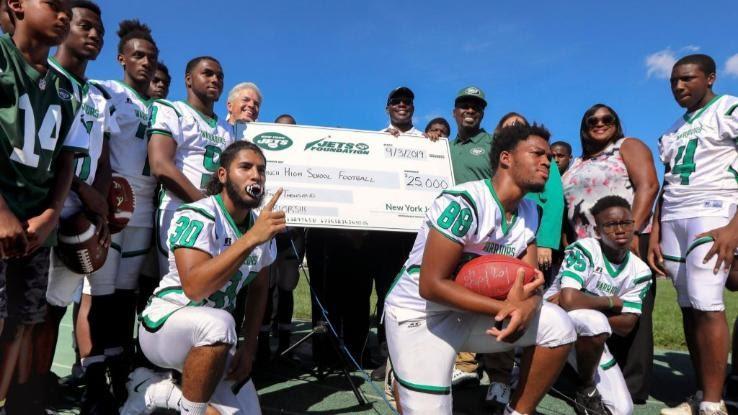How Do I Withdraw Money From My Ira

Not only is it possible to make charitable donations from your individual retirement account (IRA), but doing so comes with a few tax perks. While some rules and guidelines apply, charitable IRA donations can be a great way to give back while also lowering your adjusted gross income. We'll take you through everything you need to know about qualified charitable donations (QCDs), the rules surrounding them and their benefits to help you better understand the process of donating retirement funds.
What Are QCDs, and Who Can Make One?

A QCD involves making a donation directly from (and through) your IRA custodian to a qualified charity of your choice. One of the beneficial things about making this kind of donation — aside from the support you're showing for causes that are important to you — is that, when done correctly, a QCD comes with several tax benefits.
The first is that, unlike normal deductions from your IRA account, QCDs are not considered taxable income. Before you make such a donation, however, you should be aware that there are certain rules you need to comply with to ensure you don't face any penalties.
QCDs can be made from a variety of different types of IRAs, including traditional and rollover. If you want to make a QCD, the following rules apply:
- The IRA owner must be at least 70 1/2 years old.
- Unless you're making a nondeductible contribution, the amount that can qualify as a QCD must be limited to the amount you would normally be taxed on as ordinary income.
- The maximum total QCD amount you can contribute each year is equal to your total required minimum distribution (RMD) or up to $100,000. While you can make a donation that exceeds your yearly RMD, be aware that the extra amount will not qualify towards helping you meet your next year's RMDs.
- You must make the QCD by your RMD deadline in order for it to count towards the current tax year.
- A QCD must be made directly from your IRA custodian. It won't count if the funds are first released directly to you, even if you later donate them to charity. One notable exception is that if your IRA trustee makes out a check to the charity, it's okay for you to deliver it.
Before making a QCD, talk to your IRA custodian to ensure that you understand these and any other applicable rules.
What Types of Charities Qualify?

It's also important to remember that "Q" in QCD stands for "qualified," which means that not every donation you make is eligible. The most important thing to remember is that your QCD must be made to a 501(c)(3) organization that's eligible to receive tax-deductible contributions.
While you'll want to make sure that the organization you choose to donate to does indeed have 501(c)(3) status, examples of common organizations that fall under this classification include:
- Public charities
- Churches and religious organizations
- Schools and other education organizations
- Scientific and literary organizations
- Amateur athletic organizations
- Organizations that work to prevent animal or child cruelty
Organizations that do not tend to qualify to receive QCDs include:
- Donor-advised funds
- Some private foundations
- Groups that support tax-exempt charities
Additionally, any donations that directly benefit you do not count as QCDs. For instance, buying a ticket to a charity event or gala would not be considered a qualifying donation.
How QCDs Affect an IRA's Required Minimum Distribution

QCDs offer an effective way to help meet either all or part of your IRA's annual RMD if you don't need or want to use the money in this retirement account as personal income. Upon turning 72, and if you haven't already started making withdrawals from your IRA, you'll be required to start taking out RMDs if you have a traditional IRA, as opposed to a Roth IRA.
Because Roth IRAs are made up of investments that came from post-tax dollars, no minimum distributions are required while the owner is alive. The reason that RMDs are required on traditional IRAs is that they're initially funded with pre-tax dollars. So when you start withdrawing those funds, you'll be required to pay taxes on them because they count as income.
QCDs offer an effective way to pay less in taxes if you find that you have to take out money from your traditional IRA that you don't necessarily need or don't want to pay taxes on. By donating the money instead, you can lower your taxable adjusted gross income.
QCDs can also offer a way to increase the amount you're able to donate to the cause of your choice. If you want to make a large donation in the form of a QCD, you should aim to do so before you've taken out RMDs for the year. For instance, if you take out an RMD for personal use near the beginning of the year, you'll have to pay taxes on it, which will reduce the amount that can count towards a QCD you make later on.
What the Process Entails and How to Complete It

If you're interested in making a QCD, you'll need to get in touch with your IRA custodian — the financial institution that holds and manages your IRA's assets and ensures it follows various regulations. Your custodian will either send your donation directly to the charity or can issue you a check payable to the charity, which you can then deliver.
Either way, the charity should give you a receipt that you can then use to validate the QCD on your tax return. The receipt should also specify that you did not receive any goods or services as a result of the donation; these can be considered purchases and are taxable.
Also make sure that you keep records of:
- The date you made the donation
- The account you made the donation from
- The amount you gave
- The name of the charity or charities that received the QCD(s)
How to File Taxes to Reflect QCDs

When tax time rolls around, your QCD distributions will be reported on Form 1099-R. When it comes to reporting a QCD on Form 1040, you'll include the total donation amount on the "IRA Distributions" line. If you used a QCD to cover your entire year's RMDs, you'll write "0" on the "taxable amount" line. The IRS also advises writing "QCD" next to this line to further clarify your entry.
In certain situations, you may also need to file Form 8606, such as if:
- You made the QCD from a Roth IRA
- You made the QCD from a traditional IRA in which you had a basis (money from post-tax dollars) and from which you received non-QCD distributions during the same year
In some ways, this process is easy. However, there are some details that can trip up even the savviest individuals. If you have any questions, don't hesitate to speak with a qualified tax professional.
MORE FROM ASKMONEY.COM
How Do I Withdraw Money From My Ira
Source: https://www.askmoney.com/investing/charitable-gifts-ira?utm_content=params%3Ao%3D1465803%26ad%3DdirN%26qo%3DserpIndex
Posted by: lindsayfatinvand.blogspot.com

0 Response to "How Do I Withdraw Money From My Ira"
Post a Comment